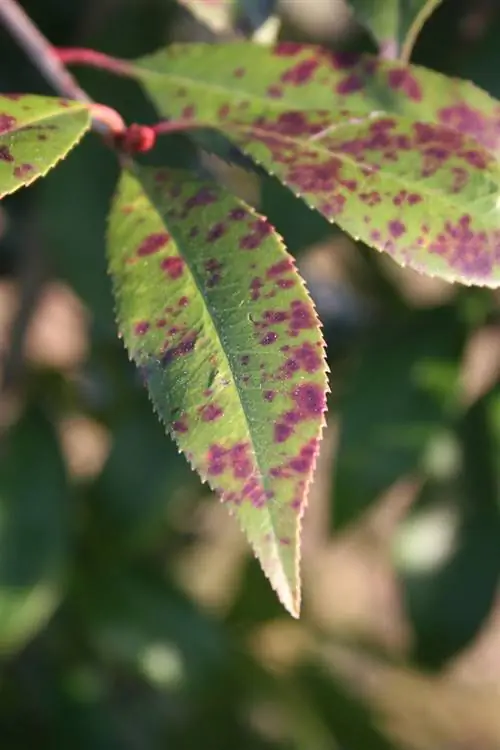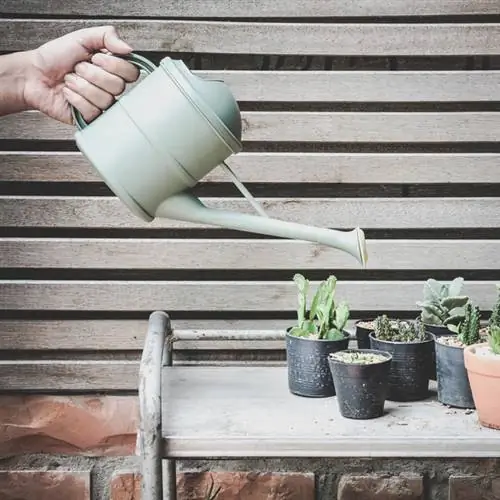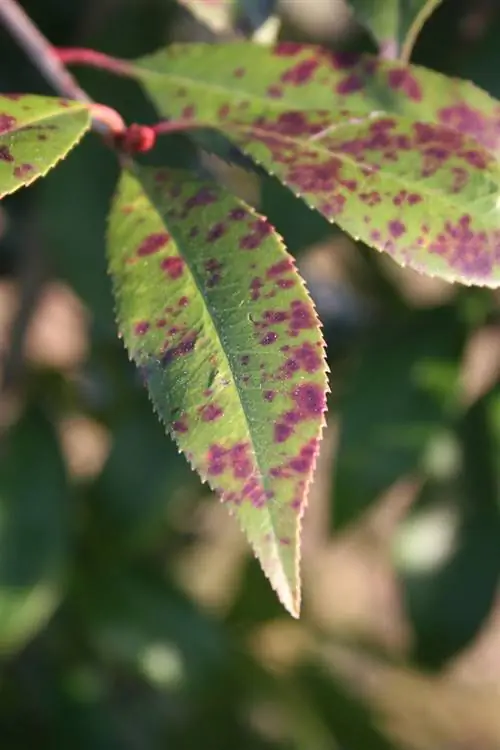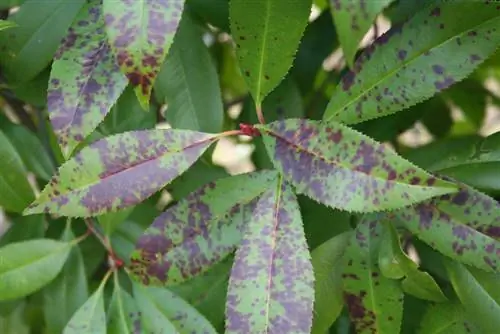- Author admin [email protected].
- Public 2023-12-16 16:46.
- Last modified 2025-01-23 11:21.
Brown spots on the leaves of the loquat are dreaded signs of damage that are not only caused by diseases and parasites. They can expand significantly and cause the leaves to die. The damage can be prevented by taking simple measures.
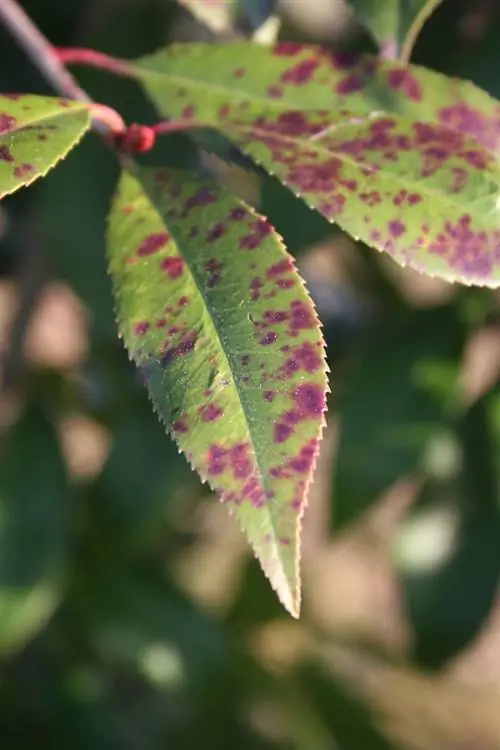
What causes brown spots on loquat leaves?
Brown spots on loquat leaves can be caused by parasite infestation, fungal diseases, incorrect location conditions or drought stress. Countermeasures include removing infected leaves, using home remedies or plant strengtheners and positioning the plant appropriately.
Diseases and parasites
Loquats are plagued by parasites such as aphids. A heavy pest infestation causes discoloration and spots to form on the leaves. Remove the infected leaves and cut completely infected shoots back to the old wood. You can actively combat aphids with a solution of water, rapeseed oil and soap. Spray the entire plant with the product.
The spores of various fungi spread through the air in wind and rain and settle preferentially on the leaves of the loquat. They are the cause of leaf browning. You do not need to remove the affected leaves. Spray the entire plant with a solution based on copper sulfate. As a preventative measure against fungal infestation, you should water your loquat regularly with a plant strengthener. A decoction of nettle, wormwood or garlic supports the vitality of the plant.
Cool location in winter
If the potted plant is too warm in winter, the leaves get brown spots. The plant requires a cool location with shelter from the wind. A spot on the balcony directly against the wall of the house is ideal. Shrubs and hedges that grow outdoors must be insulated from frost.
The optimal protection for outdoor plants:
- Press bamboo sticks into the ground around the trunk
- Wrap wire around the sticks
- Fill fallen leaves into the gap
Protected location in summer
Warm summer winds cause the plant to lose a lot of water. The dry air absorbs the moisture that the leaves secrete. If it cannot balance its water needs, the leaves tend to turn brown. These symptoms are weather-related and indicate the drought stress the plant is experiencing.
Both potted plants and outdoor shrubs like a location protected from the wind. Move potted plants to a location that offers protection from direct sunlight. When planting shrubs in the garden, make sure they are in a light location with indirect sun. If you water the plant regularly, you will prevent drought stress.

